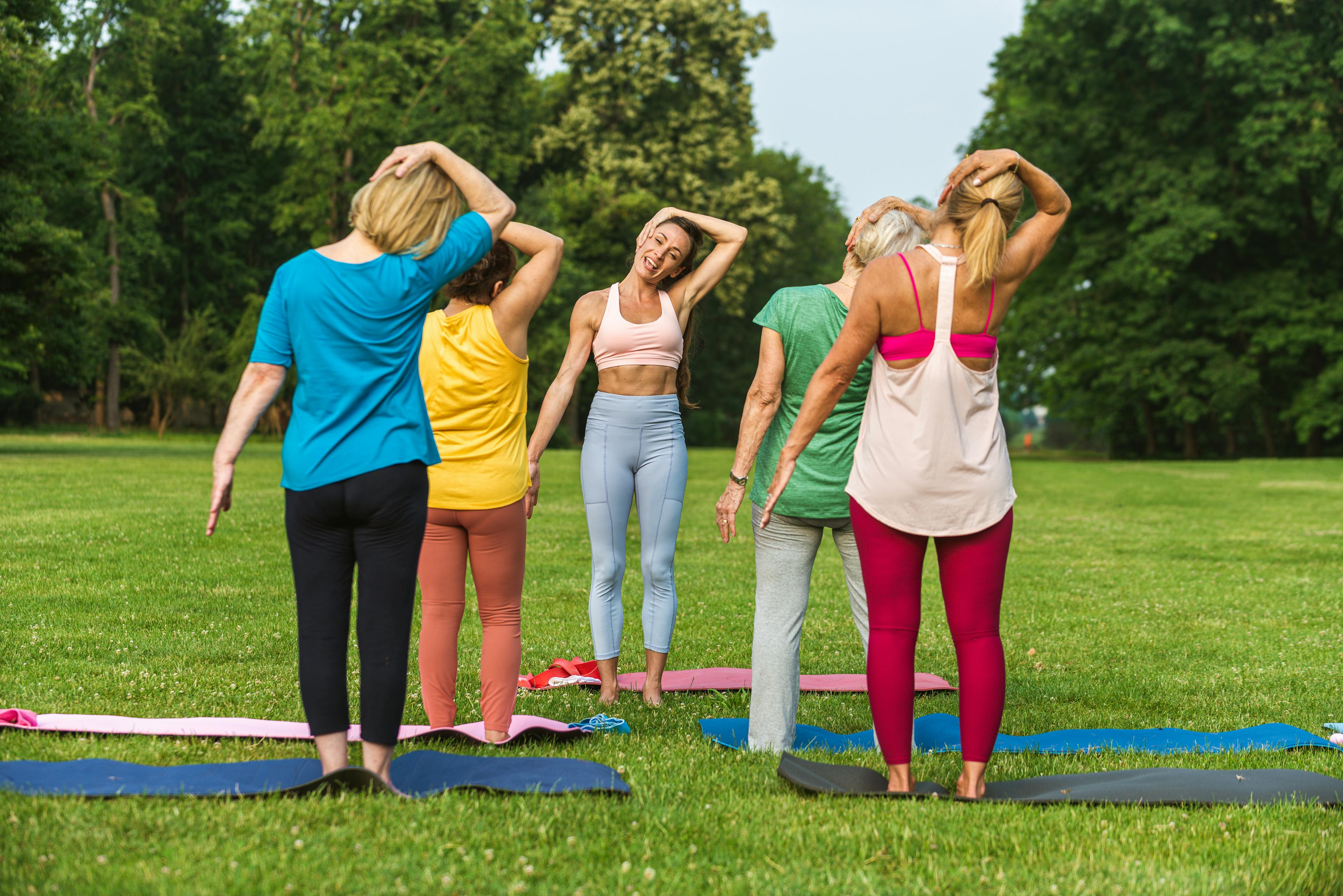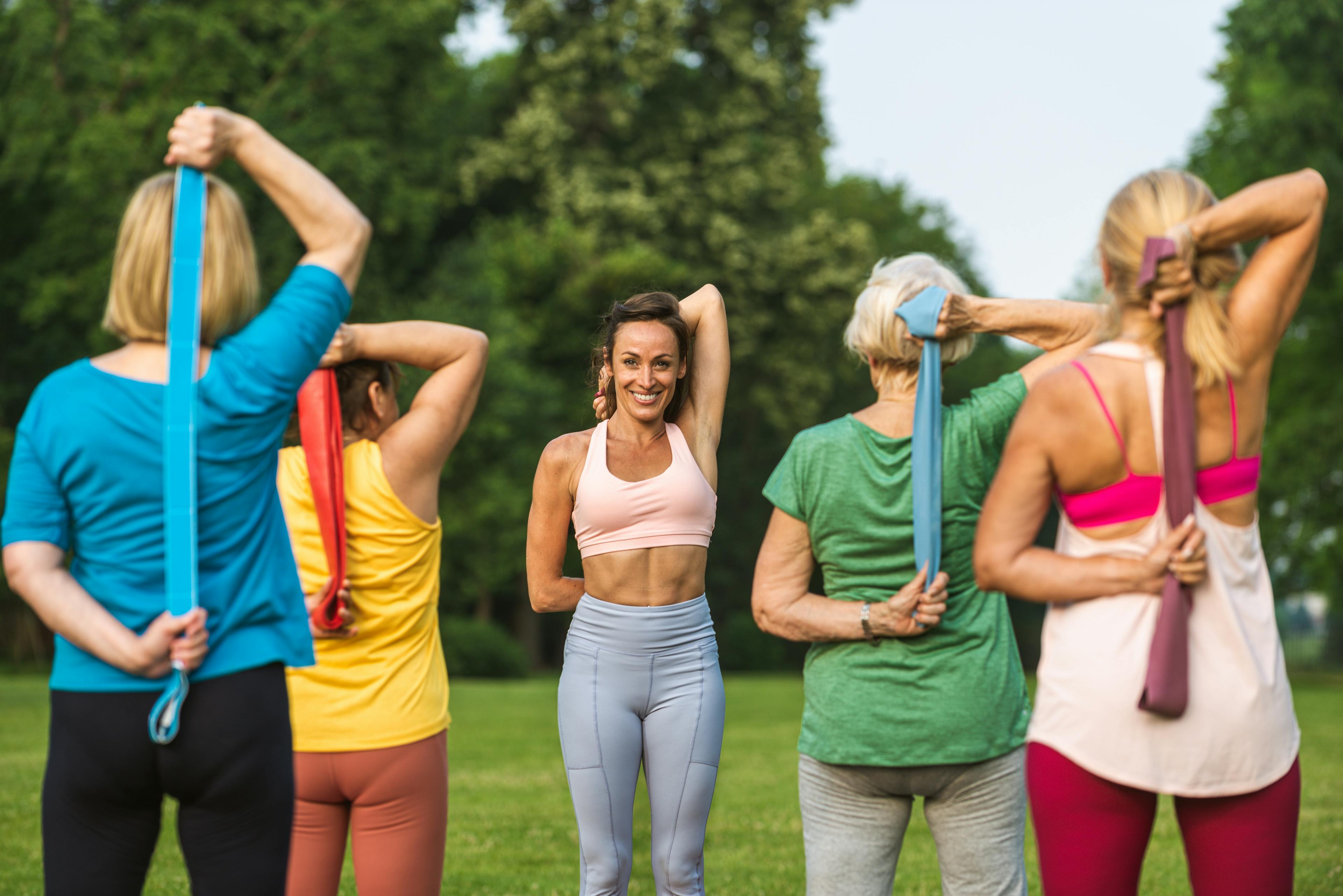Why Movement Matters
Regardless of what stage of life you're in, movement should be part of your daily routine. Think of it in two ways: incidental movement and planned movement.
- Incidental movement is the positive choices you make throughout your day, like taking the stairs instead of the lift, parking further away from the station to get in extra steps, or doing squats while you're brushing your teeth.
- Planned movement is exercise you schedule into your day, like a morning walk or an at-home workout.
All these opportunities to move your body add up. Movement benefits both your physical and mental health, while rest and gentle movement are vital for recovery, increasing the intensity of your exercise can offer even greater benefits.
Regular movement is a powerful tool to protect all aspects of your health. It supports a healthy weight, improves cardiovascular health, and strengthens bones and muscles. From a mental health perspective, exercise can improve your mood, reduce stress and anxiety, and boost energy. It also helps regulate hormones, improves sleep quality, and prevents falls.
Ultimately, staying active can help you thrive at every stage of life.
Starting a New Routine: A Sustainable Approach
When you’re starting a new exercise journey, the key is to be conservative. Apply the principle of progressive overload, which means progressing slowly and gradually, allowing your joints and muscles to adapt. Listen to your body and remember that rest is a crucial part of the process.
- Muscle soreness is common after starting a new routine, whether it’s an uphill walk or dumbbell work. This dull pain should subside after one or two days.
- Cardiovascular training, like walking or cycling, requires two to three days between sessions for your body to recover.
- Strength training also requires one to three days of recovery.
- Recovery days are just as important. Use them for gentle movement to keep your joints mobile without placing a load on them, such as a low-intensity walk, gentle stretching, or yoga poses.
If you have any underlying health conditions, it's always best to check with your General Practitioner before starting a new routine.
The Best Exercises for Perimenopause and Menopause
The best type of exercise is the one you enjoy. Ideally, a well-rounded routine should include a mix of aerobic (cardiovascular) exercise, strength training, balance, and stretching.
- Aerobic exercise can be as simple as walking, cycling, or jogging.
- Strength exercise combats the reduction in bone mineral density and muscle mass that comes with a decrease in estrogen. This can be achieved using your body weight, dumbbells or resistance bands. As the joints and muscles adapt to carrying extra load, think about how you can progressively increase the load. You can do this by lifting heavier weights, adding a pause or slowing down the movement, or by increasing the repetitions.
- Flexibility exercises such as yoga, pilates, and tai chi, are great for improving balance, coordination, and range of motion, which reduces the risk of falls. They also help counteract joint stiffness and muscle tightness caused by hormone fluctuations. As an added benefit, these activities provide stress relief, which can improve sleep and reduce anxiety.
- Balance exercises should be included in every program and are important in reducing the risk of falls. As we enter menopause and our hormones start to fluctuate our bones lose density and if we were to fall, our risk of fracture increases.
Consistency is more important than intensity. It’s better to engage in moderate activity regularly than to do sporadic, intense workouts.
We need to find a way to incorporate exercise into our life and to frame it in a positive way. Maybe try exercising with friends or being outside in nature. Perhaps try something new, like rock climbing, or something you haven’t done in a long time, like throwing a frisbee. Think about what you’ll enjoy most and make sure it’s realistic and achievable. It’s okay if you can’t achieve the same results you did in your teens or twenties; the goal is to make physical activity part of your everyday life.
The Power of Strength Training
Strength training is especially important for women in perimenopause and menopause. This is a time when our muscle mass naturally starts to diminish, and we're at an increased risk of osteoporosis due to a decrease in estrogen.
- Boosts Bone Health: When your muscles pull on your bones, the bones respond by renewing and strengthening themselves. To strengthen your muscles, you need resistance from weights, resistance bands, or your own body weight. High-impact activity, such as jumping, skipping, hopping, or jogging, is also particularly beneficial for bone and joint health. This helps bones and muscles strengthen, leading to a decreased risk of falls.
- Maintains Muscle Mass: As estrogen levels diminish, muscle mass also starts to decrease, which affects metabolism and can cause an increase in fat, especially around the abdomen. Strength training is essential for weight management and helps to regulate blood sugar.
- Improves Mental Wellbeing: Strength training is linked to better mood, reduced anxiety, and improved confidence.
If you're new to strength training, it’s a great idea to consult with an Exercise Physiologist. They can tailor your program to ensure you use the right technique, find the right intensity for your body, and find activities you can do in your recovery days to help you get the most out of your workouts.

Don't Forget to Stretch!
Activities like yoga, pilates, and tai chi are incredibly beneficial as they work on balance, coordination, and flexibility. Having good balance and flexibility means you're less likely to trip and fall.
- Counteracts Stiffness: Flexibility helps your joints stay mobile to counteract the joint stiffness and muscle tightness that can be brought on by estrogen fluctuations. Regular stretching improves your range of motion and further decreases the risk of falls.
- Supports Bone Health: Exercise is important for continuing to strengthen bones and muscles if you have osteoporosis, regardless of your age or whether you have broken bones in the past.
- Reduces Stress: Yoga, tai chi, and pilates also have the added benefit of providing stress relief through relaxation, which can improve sleep and reduce anxiety.
We hope this guide empowers you to take charge of your wellbeing through movement. By incorporating these principles and finding activities you love, you can navigate perimenopause and menopause feeling strong, confident, and full of energy.
If you're interested in understanding perimenopause and menopause can impact your mental health you can find out more here.
Achieve Your Individual Health Goals
Remember perimenopause is a new chapter in your life, not a problem to be fixed. By listening to your body, nourishing it with care and seeking support when you need it, you can navigate this transition with strength and confidence.
We hope this has provided you with the clarity and understanding you need. This transition is a natural part of life, and you don’t have to go through it alone. Moshy offers a variety of tools to support you in your journey, including:
- Educational resources to empower you with in-depth knowledge.
- Dietitian-designed meal plans for nourishing your body.
- Consultations with our team of medical professionals to explore and manage your weight loss goals.
Sometimes, extra guidance is essential to simplify complex health challenges, and that's precisely why our weight management program is designed to help you make informed choices and achieve your goals.
Experience a streamlined consultation process with Moshy—complete a brief questionnaire and quickly connect with your health practitioner, all without the stress of in-person clinic visits.
If you're ready to take the next step in your health journey, our team is here to help.
